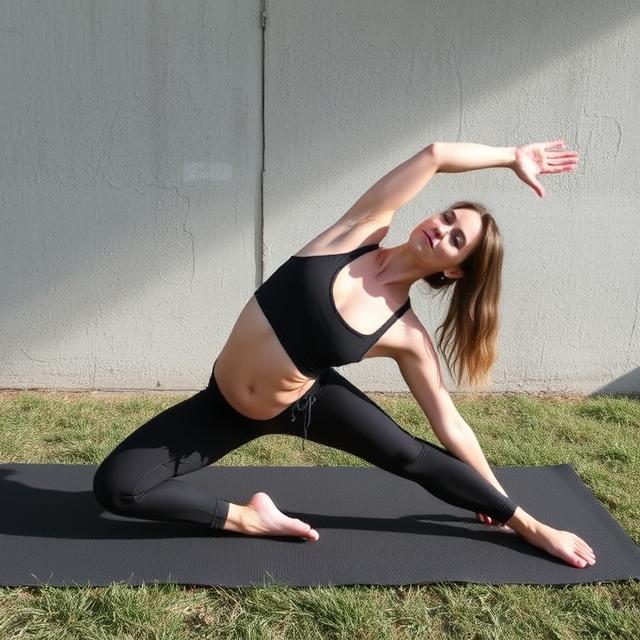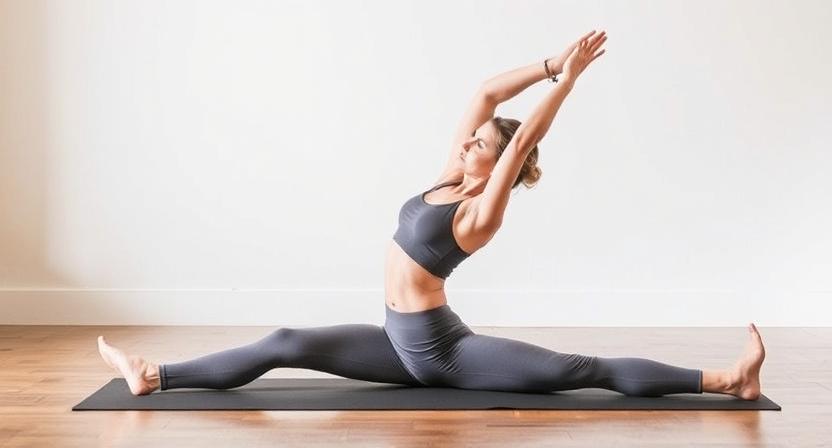Back pain is one of the most common health complaints worldwide, affecting millions of people regardless of age or lifestyle. Whether it stems from prolonged sitting, improper posture, heavy lifting, or simply daily stress, back pain can significantly reduce your quality of life. The good news is that incorporating a few simple daily stretches into your routine can help relieve tension, increase flexibility, and reduce back pain over time.

Why Stretching Helps with Back Pain
Stretching helps lengthen tight muscles, improve posture, and increase mobility. When done regularly, these exercises can alleviate stiffness and prevent further injury. Stretches also enhance circulation, bringing oxygen and nutrients to the muscles, which aids in healing and reduces discomfort.
Simple Daily Stretches for Back Pain Relief
1. Child’s Pose
How to do it:
- Kneel on the floor with your big toes touching and knees apart.
- Sit back on your heels and stretch your arms forward, lowering your chest to the floor.
- Hold the stretch for 30 seconds to 1 minute. Benefits: Relieves tension in the lower back and hips.
2. Cat-Cow Stretch
How to do it:
- Get on your hands and knees in a tabletop position.
- Inhale, arch your back, and lift your head and tailbone (Cow Pose).
- Exhale, round your spine and tuck your chin (Cat Pose).
- Repeat for 10 rounds. Benefits: Increases flexibility in the spine and reduces stiffness.
3. Knee-to-Chest Stretch
How to do it:
- Lie on your back with knees bent and feet flat.
- Bring one knee toward your chest, holding it with both hands.
- Hold for 30 seconds, then switch sides. Benefits: Stretches the lower back and glutes.
4. Seated Spinal Twist
How to do it:
- Sit on the floor with your legs extended.
- Bend your right knee and cross it over your left leg.
- Place your right hand behind you for support and twist your torso to the right.
- Hold for 30 seconds, then switch sides. Benefits: Enhances spinal mobility and relieves tension.
5. Standing Hamstring Stretch
How to do it:
- Stand tall and extend one leg forward with the heel on the ground.
- Hinge at the hips and lean forward, keeping your back straight.
- Hold for 30 seconds, then switch sides. Benefits: Loosens tight hamstrings, which can contribute to lower back pain.
6. Pelvic Tilts
How to do it:
- Lie on your back with knees bent and feet flat.
- Tighten your abdominal muscles and flatten your lower back against the floor.
- Hold for a few seconds, then relax.
- Repeat 10-15 times. Benefits: Strengthens lower back and abdominal muscles.
7. Cobra Stretch
How to do it:
- Lie face down with hands under your shoulders.
- Press into your hands and lift your chest off the floor, keeping your hips grounded.
- Hold for 15-30 seconds. Benefits: Stretches the lower back and improves spinal flexibility.
8. Hip Flexor Stretch
How to do it:
- Kneel on your right knee with left foot in front, forming a 90-degree angle.
- Lean forward slightly to stretch the front of the right hip.
- Hold for 30 seconds, then switch sides. Benefits: Releases tight hip flexors that can strain the lower back.
Tips for Safe Stretching
- Never force a stretch to the point of pain.
- Breathe deeply and steadily.
- Perform stretches slowly and with control.
- If you have a back injury or chronic pain, consult a healthcare professional before starting.
20 Frequently Asked Questions (FAQs)
- How often should I stretch to reduce back pain? Daily stretching is recommended for the best results.
- How long should I hold each stretch? Ideally, hold each stretch for 20-60 seconds.
- Can stretching cure back pain completely? Stretching helps manage and reduce back pain, but it may not “cure” underlying conditions.
- What time of day is best for stretching? Morning or evening—whenever you can do it consistently.
- Can stretching make back pain worse? If done incorrectly or aggressively, yes. Always stretch gently.
- Are these stretches safe during pregnancy? Some are, but consult your doctor before starting any routine.
- Do I need equipment for these stretches? No, these are bodyweight-only stretches.
- How soon will I see results? Some relief may be immediate, but consistent practice shows better results over weeks.
- Can I stretch if I have a herniated disc? Consult your doctor or physical therapist first.
- Is yoga good for back pain? Yes, gentle yoga incorporates many beneficial stretches.
- Should I stretch before or after exercise? Both can be beneficial, but static stretching is typically done after exercise.
- What if I feel sore after stretching? Mild soreness is normal; sharp pain is not.
- Can these stretches help with sciatica? Some may alleviate sciatic nerve tension, but consult a professional.
- How long should my daily stretching routine take? Around 10-15 minutes.
- Are there stretches to avoid for back pain? Avoid deep backbends or aggressive twisting if you have pain.
- Do these stretches improve posture? Yes, by reducing muscle tightness and imbalances.
- Can I do these stretches at work? Many of them can be adapted for the office.
- Are these stretches suitable for seniors? Yes, with modifications as needed.
- What if my back pain gets worse? Stop the stretches and consult a healthcare provider.
- Is walking also good for back pain? Yes, walking is a low-impact way to keep the back mobile.
Final Thoughts
Incorporating simple daily stretches into your routine is an effective and accessible way to reduce back pain, improve flexibility, and enhance overall well-being. Start slowly, listen to your body, and stay consistent. With time, you may notice reduced discomfort and improved mobility, empowering you to enjoy daily life without the burden of back pain.
Disclaimer: If you have a serious back condition or severe pain, always consult a medical professional before starting any new exercise routine.



